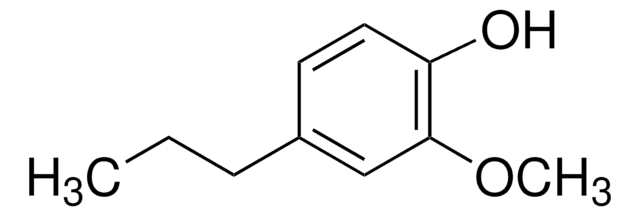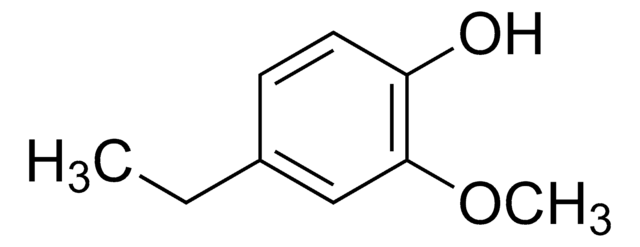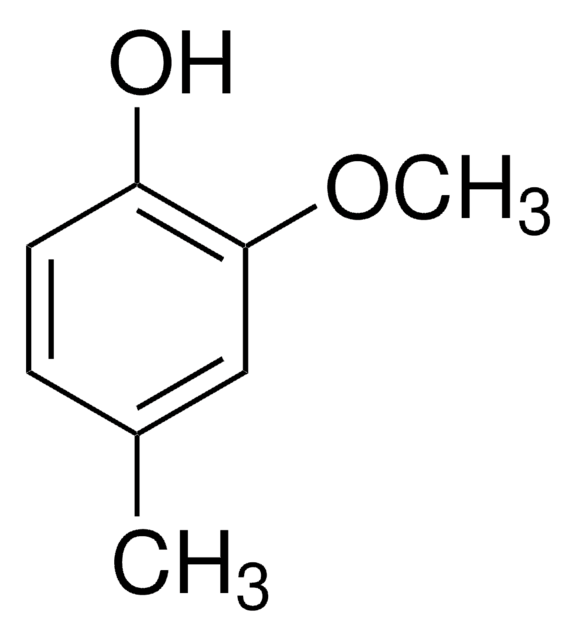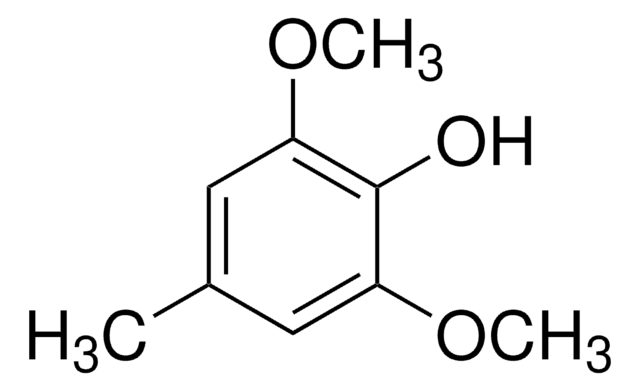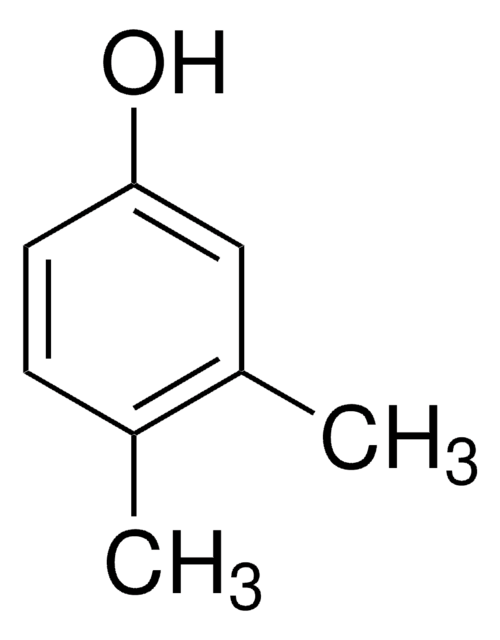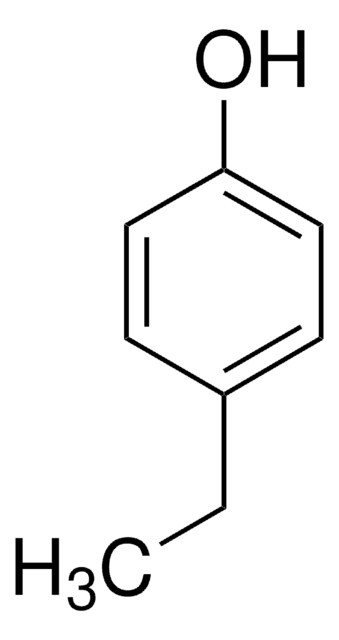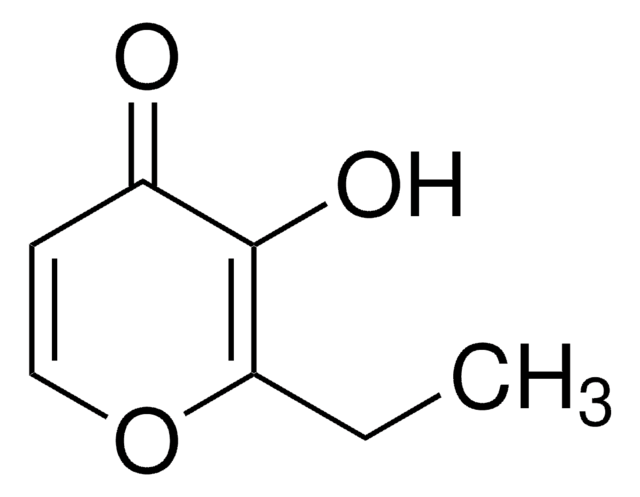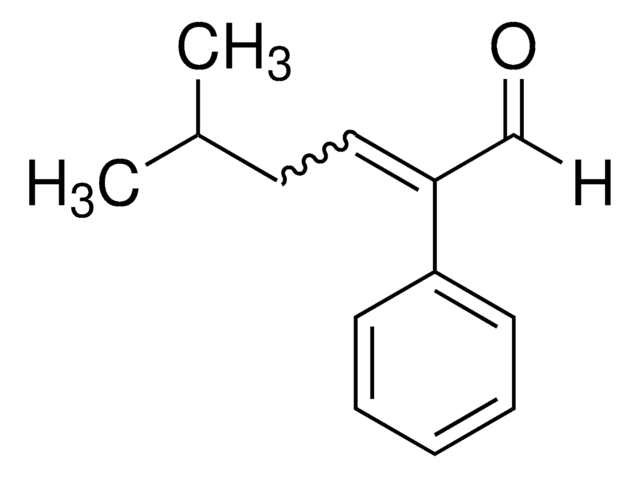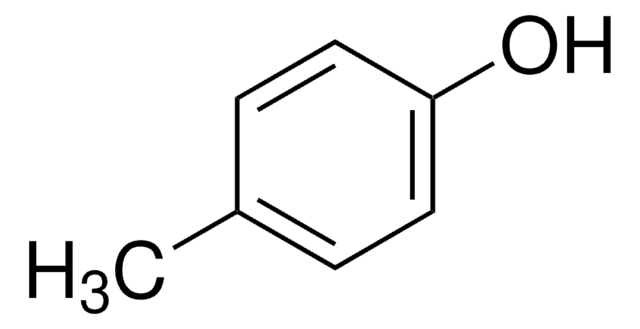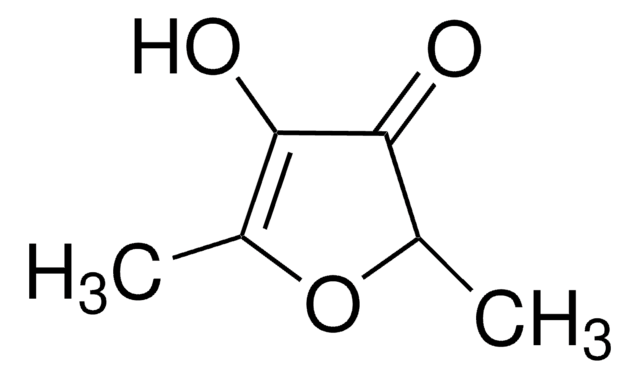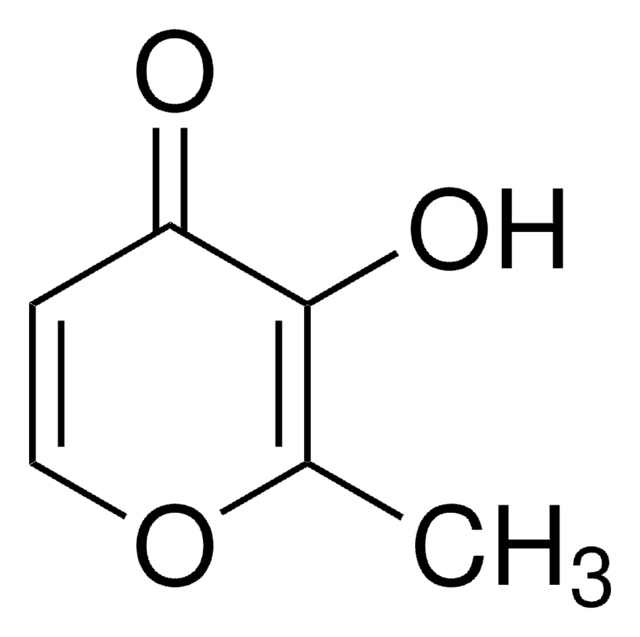W267104
2-Methoxy-4-methylphenol
≥98%, FG
Synonym(s):
2-Hydroxy-5-methylanisole, 2-Methoxy-p-cresol, 4-Hydroxy-3-methoxytoluene, 4-Methylguaiacol, Creosol
About This Item
Fragrance grade
Halal
Kosher
meets purity specifications of JECFA
Recommended Products
biological source
synthetic
Quality Level
grade
FG
Fragrance grade
Halal
Kosher
Agency
follows IFRA guidelines
meets purity specifications of JECFA
reg. compliance
EU Regulation 1223/2009
EU Regulation 1334/2008 & 178/2002
FDA 21 CFR 117
FDA 21 CFR 172.515
Assay
≥98%
color
colorless to light yellow
refractive index
n20/D 1.537 (lit.)
bp
221-222 °C (lit.)
mp
5 °C (lit.)
density
1.092 g/mL at 25 °C (lit.)
application(s)
flavors and fragrances
Documentation
see Safety & Documentation for available documents
food allergen
no known allergens
fragrance allergen
no known allergens
Organoleptic
clove; leathery; spicy; smoky; sweet; vanilla
SMILES string
COc1cc(C)ccc1O
InChI
1S/C8H10O2/c1-6-3-4-7(9)8(5-6)10-2/h3-5,9H,1-2H3
InChI key
PETRWTHZSKVLRE-UHFFFAOYSA-N
Looking for similar products? Visit Product Comparison Guide
General description
Biochem/physiol Actions
Other Notes
Signal Word
Warning
Hazard Statements
Precautionary Statements
Hazard Classifications
Acute Tox. 4 Oral - Eye Irrit. 2 - Skin Irrit. 2
Storage Class Code
10 - Combustible liquids
WGK
WGK 3
Flash Point(F)
210.2 °F - closed cup
Flash Point(C)
99 °C - closed cup
Personal Protective Equipment
Choose from one of the most recent versions:
Already Own This Product?
Find documentation for the products that you have recently purchased in the Document Library.
Customers Also Viewed
Our team of scientists has experience in all areas of research including Life Science, Material Science, Chemical Synthesis, Chromatography, Analytical and many others.
Contact Technical Service